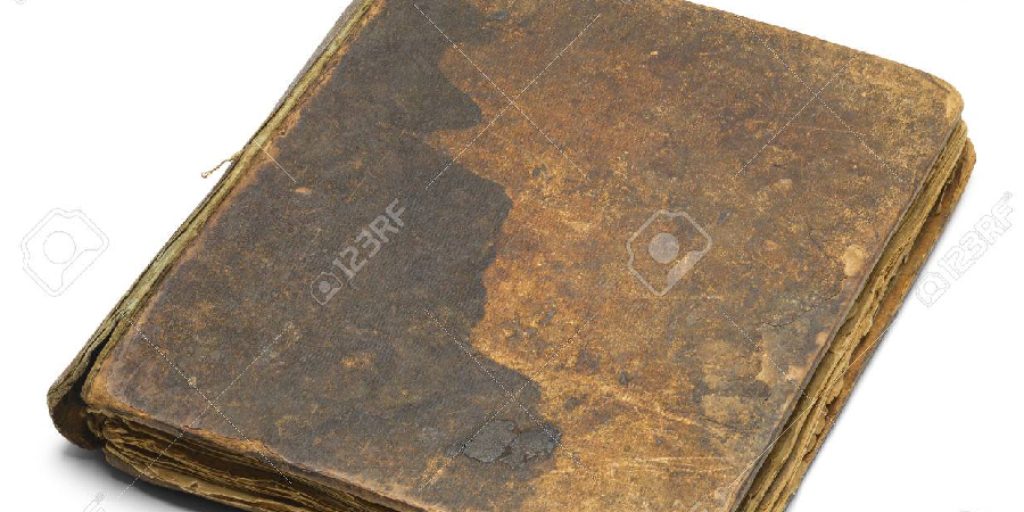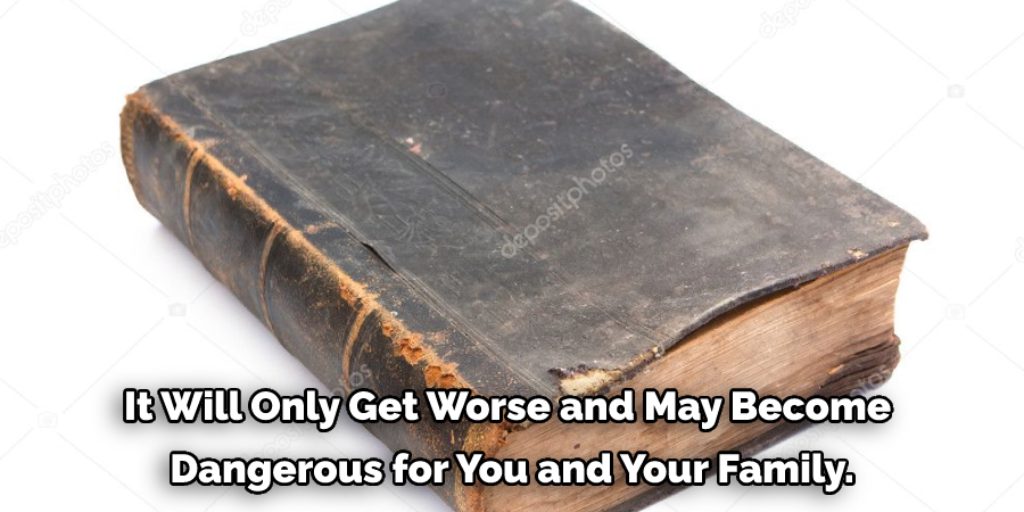How to Fix a Dried Water Damaged Book
Introduction:
Books are treasures that tell stories, connect people to different cultures and provide knowledge. Unfortunately, however, they can become damaged in many ways. Whether it’s water damage or something else, you can take steps to save your book if you act quickly enough. But what do you do if the damage is too much? Here is where professional conservation comes into play. You may be able to bring your book back from the brink of death with their help. I will discuss how to fix a dried water-damaged book in this article. So let us get started.

Guide on How to Fix a Dried Water Damaged Book:
Step: 1 Separate the Pages:
You must separate the pages of your water damaged book from each other. If the book is stuck together with dried glue, use a sharp object like a knife to cut them apart. Make sure not to tear the pages in the process.
Step: 2 Remove Excess Paper From The Book Block:
Use a damp cloth to remove any excess paper pulp and small pieces. You can also wash it using a soapy warm water solution. Use a hairdryer or fan to dry up any damp parts of the paper. Repeat this step until all soaked paper has been completely removed from your book block.
Step : 3 Rinse With Water:
Pour lukewarm water over the book block to remove any mold that may have formed. The water should not be of a very high temperature, or it will damage your book further.
Step: 4 Use A Mild Detergent Solution:
Next, you must soak the book in a mild detergent solution for about 15-20 minutes. Then wipe off the excess moisture with paper towels or a soft dry cloth once again to prevent water spotting on the pages when they are allowed to dry up naturally over time. Note that excessive soap can leave spots on your pages when they are dried up, so keep it minimal while using any soap solution during this step.
Step: 5 Remove Excess Moisture By Using Absorbent Materials:
Now place absorbent materials like facial tissue pieces, paper towels, or dry cloth all over the wet book pages. You can place a couple of books on top of the book you are fixing to help absorb more moisture from your book. Let it stay overnight in this way so that the pages completely dry up in a natural course.
Step: 6 Use A Book Press:
If you do not have enough time to let your water-damaged book block have a slow drying process, then use a press to speed up the process by putting weight on top of them while they are placed under some heavy books inside a book press machine. If you do not have access to one, you can also put something heavy like bricks on top of the wet books and let them have a drying cycle with time.
Step: 7 Apply A Book Clamp:
To repair the spine of your book, you must apply a clamp on top of it and leave it for about 10 hours so that it can dry properly without warping or becoming warped. This will also help fix the cover and spine of your water-damaged book.
Step: 8. Let The Pages Dry:
Allow each page to air dry completely before attempting any pressing, folding, or turning, as this may further damage the damp pages until they are completely dried up and free from moisture content.
Precautions While Fixing a Dried Water Damaged Book:

1. Do not attempt to fix a book that has mildew or mold inside the pages. It will only worsen and become dangerous for you and your family.
2. Books affected by freshwater flooding and mold should be disposed of following your local ordinances and regulations
3. Some books can be restored, but it is best to consult an expert restorer regarding any historical materials related to our cultural heritage. Being old does not mean their value can’t increase if properly maintained or preserved!
4. Use caution when using heat to dry a book. If the pages curl after drying, do not attempt to flatten them, or you will cause further damage that may make them unusable for rebinding!
5. Never use a hairdryer in a book; it can catch fire and burn your house! This is dangerous for yourself and others but very hard to put out in the home and causes unnecessary smoke damage. Also, never use a microwave oven to dry water-damaged books. They get boiling and can easily burn you.
6. Never dry water-damaged books in front of or near an open flame; not only can they catch fire, but the fumes are toxic and will remain even after removing them from the ignition source.
7. If you find mold inside pages, never attempt to brush it off because it can become airborne and cause health issues for yourself and others. Plus, removing all traces of mold is impossible, even if you think you have!
It is best to dispose of books with mold inside due to safety reasons as well as because fungi feed on cellulose (the pages glued together), so they will gradually weaken until they start falling apart inside themselves, making them unusable for rebinding unless replaced by another sheet which means more money out of your pocket to restore your book!
How to Air Dry Frozen Books?
Air-drying frozen books is a great way to preserve them for years to come. To do this properly, start by setting the books on a flat surface in the sun and let them slowly thaw. If you’re in a hurry, you can also place them in front of a fan or drop them into lukewarm water.
Once the book is thawed, lay it out on a flat surface inside and make sure that it’s exposed to some air circulation (such as an open window). Then, leave the book undisturbed until it’s completely dry. Finally, make sure to store the book away from direct sunlight, high heat, and moisture in order to keep it in excellent condition.
How to Dry a Wet Book?
Drying a wet book is an important step in preserving its condition. To do this, the first step is to identify the source of water and take any necessary steps to prevent further water damage. Then, remove all loose material such as pages and book covers, if present.
Following that, blot the wet areas with a clean cloth or paper towel to absorb excess moisture. Next, use a hairdryer set to low heat on the affected area until it is completely dry. Finally, place the book in an empty box or container with open sides and let it air-dry for several days before returning it to its shelf or storage space.
How To Save Water-Damaged Books?
Books that have suffered water damage can often be salvaged with a few simple steps. First, carefully clean the book by brushing off dirt and blotting the pages with a damp cloth.
Next, place the pages in between two pieces of absorbent paper and press them under a heavy object like a stack of books overnight. Once dry, use an archival-quality adhesive to re-attach any loose bindings or pages. Finally, store the book in a cool, dry environment to prevent further damage from humidity.
Frequently Asked Questions:
Can You Iron Water Damaged Books?
Yes, you can iron water-damaged books. If the damage is mild and has occurred only on the surface of the book’s pages, then you can try to remove some moisture by ironing your book with a low heat setting.
First, lay out paper towels over a flat work surface and place your book on them. Then cover it with another layer of paper towels and press down gently with your hands and/or iron (an actual ironing board is preferable but not required).
How to Repair Sticky Pages of Books?

There are two kinds of sticky pages – those that have been dried by overheating and those that have not undergone any heat process after they got wet. It is straightforward to tell which kind of problem yours is doing. If the pigment has already started to fade due to heat treatment, there are color inconsistencies in certain areas between the sticky and non-sticky pages.
If not, just start by putting your book under cold running water to soak all of it, especially the cover, so that you can see pasted paper loosening up. After 30 seconds or so, start removing pages one at a time using tweezers, making sure no binding threads are stuck. Use wet tissue paper between each page spread if you have to handle their bare hands.
Conclusion:
The process of fixing a water-damaged book is time-consuming and needs patience. Follow each step as mentioned, or you may end up causing more damage to your previously saved pages. Let the pages be arid before attempting further steps to be sturdy enough to handle later processes without getting torn out of their shapes.
I hope this article has been beneficial for learning how to fix a dried water-damaged book. Ensure all the precautions while following the process. Thank you, and have a nice day.




